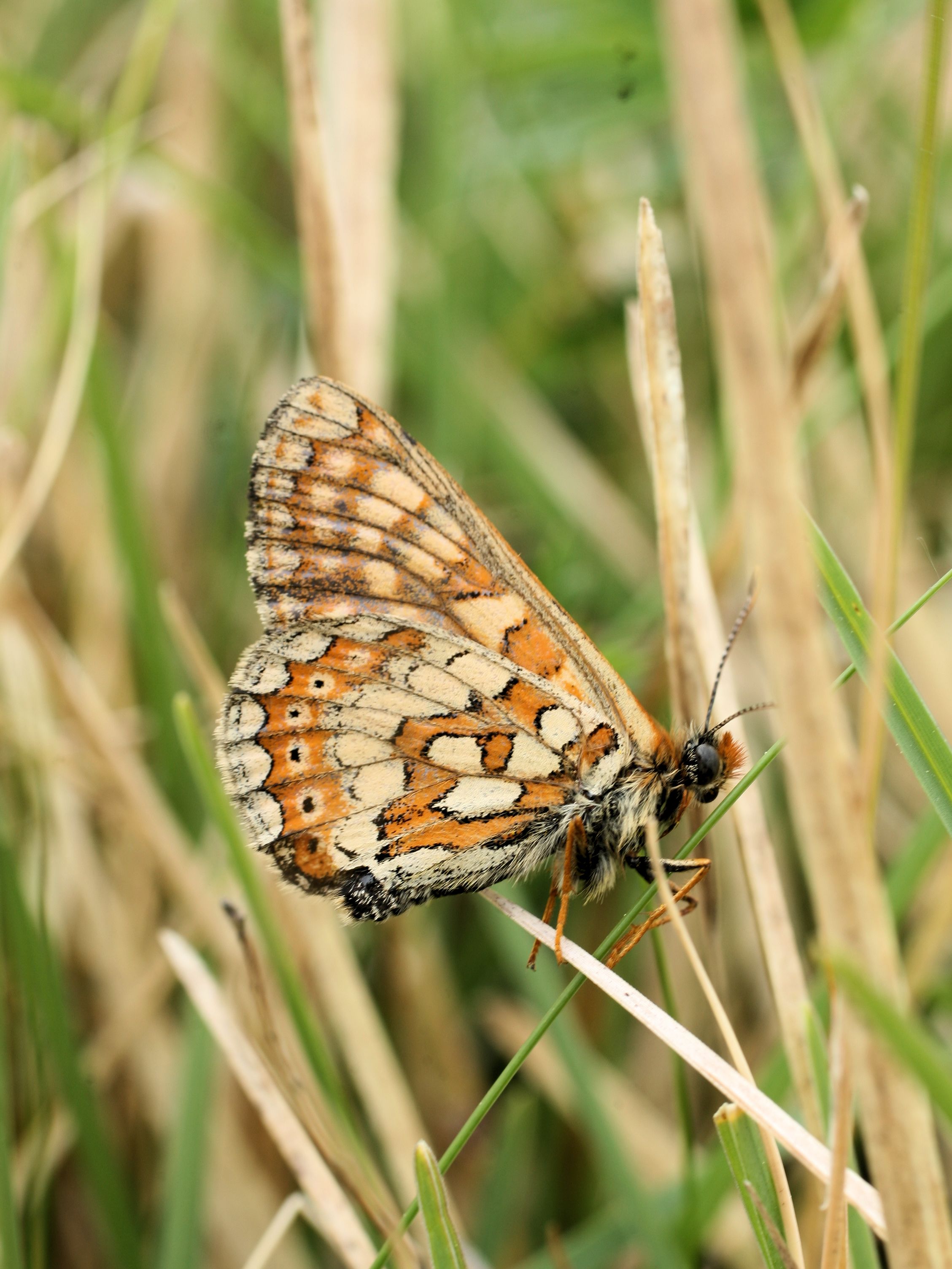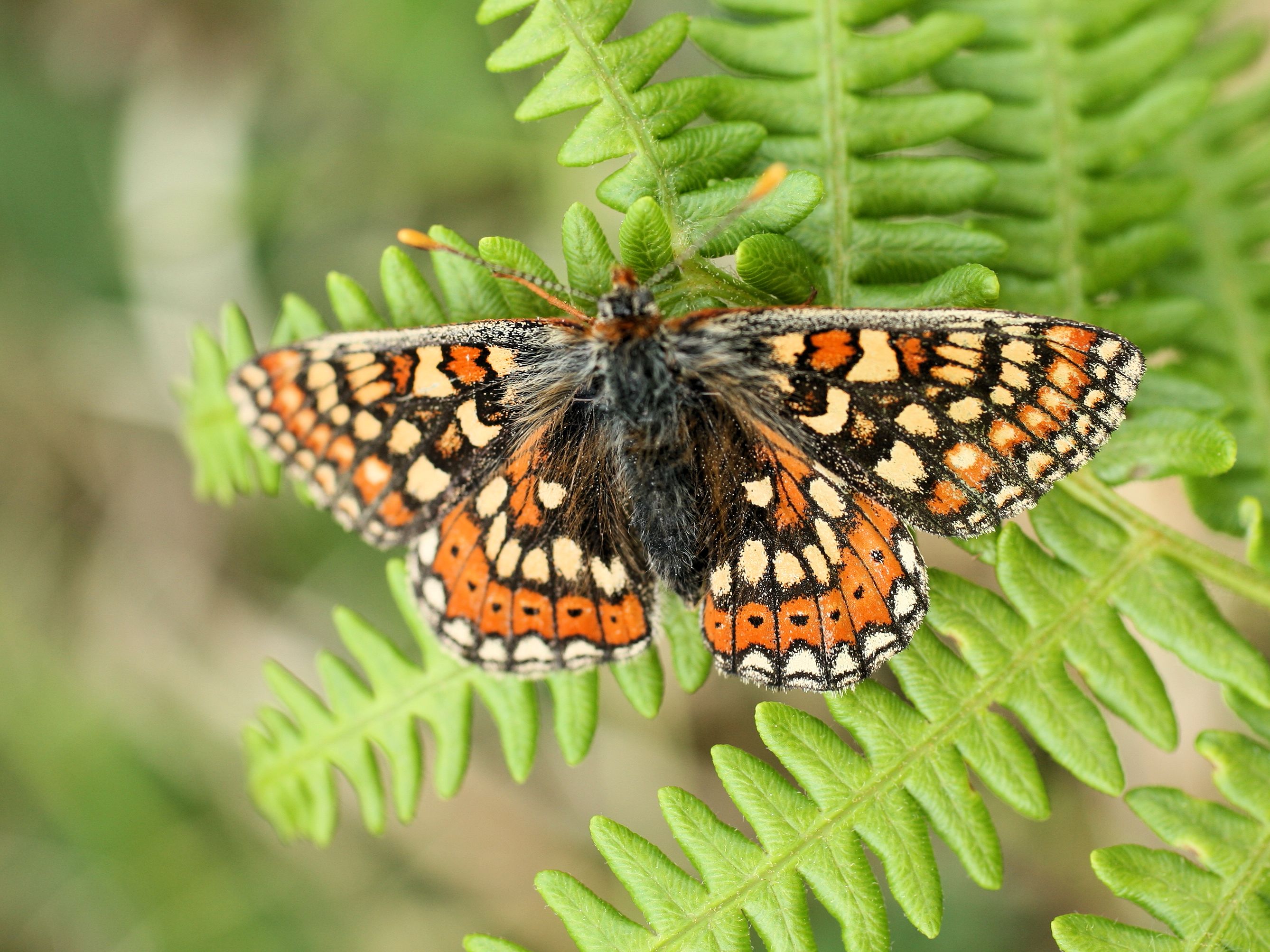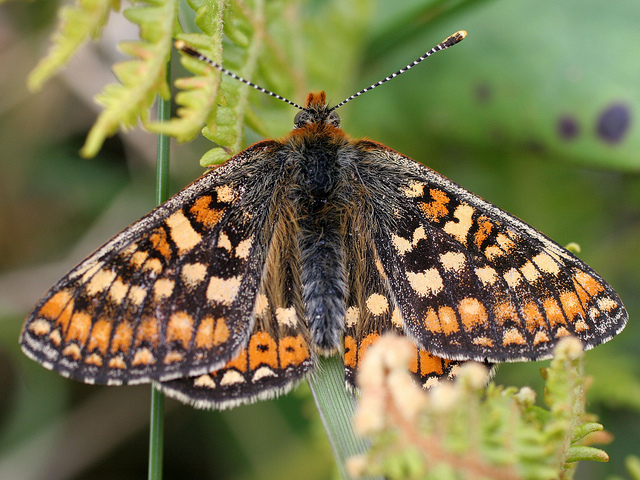
To photograph the marsh fritillary, the smallest of the four species of fritillary that occur in Ireland, I travelled to the Burren, my old stomping ground. I lived here for much of the 1990s and was privileged to work as a Park Ranger in what must be one of the most special landscapes in western Europe. There are two times of the year when it is best to look for marsh fritillary; in May and June when the adults are flying, and again in autumn when the caterpillars bask in protective webs, low down on the foliage of its food plant, Devil’s-bit scabious. To photograph the adults, in June I visited a site close to Carron village. The site here is managed specifically by farmer Hugh Robson to make it more suitable for marsh fritillary, advised and supported by Butterfly Conservation Ireland. That it took me no more than a few minutes to find and photograph the butterfly is testament to the success of their efforts. But sadly, there are few success stories like this to relate, as the marsh fritillary is under pressure, not just in Ireland but across Europe.
The marsh fritillary holds a special place in Irish conservation for, despite insects accounting for more than one third of all species here, it is the only insect afforded legal protection in Ireland. And not any old airy-fairy protection, but the full might of European law, under the EU Habitats Directive. So that means it is all happiness and light for the species, right? Hmmm…. not sure about that.
There is little that is straightforward about the marsh fritillary, and there is even uncertainty about how poorly the species is doing in Ireland. One assessment indicated that marsh fritillary range has decreased by an alarming 50% in Ireland over the last few decades and another assessment has put the figure at 30%. Yet another concludes that whereas there are certainly local-level declines, when viewed at a coarse scale, the range is actually stable. And what’s more, new marsh fritillary sites have been found recently, mostly in counties Donegal and Wicklow, which has extended the known range of the species. But this is not considered a real increase but a consequence of increased recording effort! Got it?

Marsh fritillary is an enigmatic species in other ways. Populations at any one site fluctuate widely from year to year, for no one site functions in isolation, but rather is part of a complex of sites in the landscape between which some individuals will move. Conditions at local sites might not be favourable in any given year, but having a diversity of sites allows overall population levels to remain stable over time. It does mean that the area of available suitable habitat needs to be larger than the area of occupied habitat to allow for the natural expansion and contraction characteristic of the cyclical nature of the species. However, marsh fritillary are fussy butterflies, and need habitat conditions to be just right for them to flourish. First of all, they only occur where Devil’s-bit scabious grows. But even then, there needs to be at least three plants per m2, and growing where the grass is lightly grazed and not too dominant. But too little grazing is also bad, for invading scrub is disliked also. In short, marsh fritillary require habitat conditions that are generally only provided by truly extensive livestock grazing systems, and it is the quintessential beneficiary of what is described as ‘High Nature Value Farming’. But the benefits only accrue on land where livestock stocking density is far lower than current agricultural policy and agricultural advice dictates. In this regard I consider it the species that farming forgot.
And despite the marsh fritillary still occurring at many sites in the western half of the country, from Limerick to Donegal, the future looks bleak as it is having to face so many challenges. But, of course, having a series of Special Areas of Conservation (SACs) providing protection for this species means we can control some of these factors. Right? Ah, not really, for as luck would have it, only less than 12% of marsh fritillary sites fall within the SAC network.
As I walked across the Burren on that June day, basking like the butterflies in the spring sunshine, I got angry thinking that, despite the billions of euros that taxpayers have contributed to supporting agriculture in Ireland, we seem unwilling to make space in the Irish landscape and Irish agriculture for this beautiful and vulnerable creature. That is just downright wrong.
Speckled wood #1, Dingy skipper #2, Wall brown #3, Common blue #4, Holly blue #5, Small blue #6, Meadow brown #7, Ringlet #8, Wood white #9, Cryptic wood white #10, Orange-tip #11, Green-veined white #12, Large white #13, Small white #14, Green hairstreak #15 & Marsh fritillary #16.


